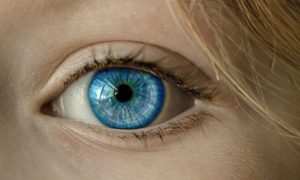
Parietal Lobe
It sits in the top of your head
- Responsible for translating: touch, temperature, and pain.
- So does it tickle? Or hurt? How does it hurt – throbbing, stabbing, sharp, dull?
The way your body translates temperature is based on the relative temperature to the body part that is being touched.
- Proprioception – ability to know where you are in space relative to the other things around you
- That awkward moment when you think the toilet is higher or closer that it really is and you almost fall.
- Hand-eye coordination – being able to see something that is moving and make your body to interact with it.
- Two-point discrimination – the body’s ability to tell if it’s being touched by one thing or two separate things. Different parts of your body have different levels of sensitivity. Large body parts have a larger distance than small body parts (fingers and tongue have the closest discrimination distance due to the number of sensors).
- Graphesthesia = writing feelings = being able to correctly translate letters or shapes drawn on your body without you looking.
When someone says “I can see it in my head” – it’s the area that can recall visual memories. Remembering the last place you saw your keys or visualizing driving directions based on the landmarks you pass (which is the only way we give directions in the South). So, when someone closes their eyes to try and remember something, they’re trying to deactivate their eyes and activate the parietal lobe.
Being able to identify a 3D object with your hands by touch only, and without your eyes. This is also how Braille works, the dot patterns created to represent letters.
Good info here and here about Braille activates the brain.

